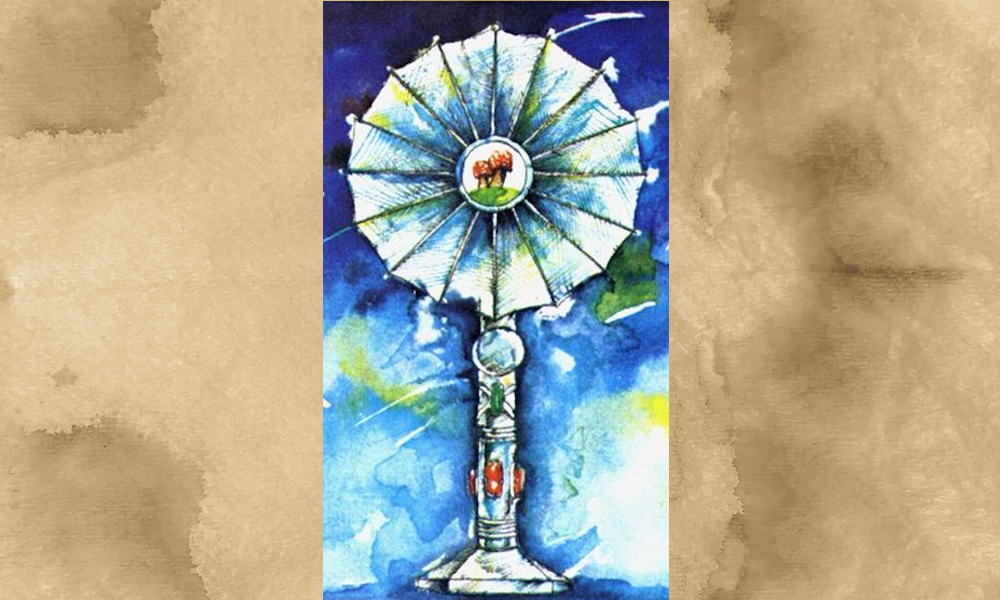Writer Glenn O’Brien (1947 – 2017) tries to explain the purpose of a strange object in the December, 1979 issue of High Times magazine.
There are a lot of beautiful views in Manhattan, but few are more imposing than that from the Cloisters, where, standing in a 15th-century archway transported from Italy, one can gaze across the Hudson River and see the primeval palisades where monolithic condominiums rise in the sky: steel towers that on a clear day scream, “You’ve had it, Gothic personalities.” That is, if you’re high and a fan of William Blake. Otherwise you might just admire the view.
Inside this wonderful museum, a division of the Metropolitan Museum of Art, there are many priceless treasures of religious art. The entire crucifixion carved inside a walnut. A tapestry comic strip depicting the extremely peculiar and horny hunt of the unicorn. But my personal faves are on the lower level in a room that contains lots of small reliquaries, chalices, monstrances, patens, ciboria and other tools of the priestly trade. Many of these items are among the most ancient artifacts in the Cloisters.
The funny thing is that the farther you go back in religious art, the more the tools of the trade resemble what is today called paraphernalia. You should see the gold straws. And the oldest chalice in the collection looks more Bacchic than bloody. But the strangest item of all is an altar tool known as a flabellum. The flabellum looks like a large silver fan, which is what it is. But it wasn’t for air circulation—it was for flying-pest control. But it’s too big to be a flyswatter. You’d never catch a fly with an ungainly silver smasher the size of a tennis racket. It would seem that the idea was …
Read More
Author: High Times / High Times






